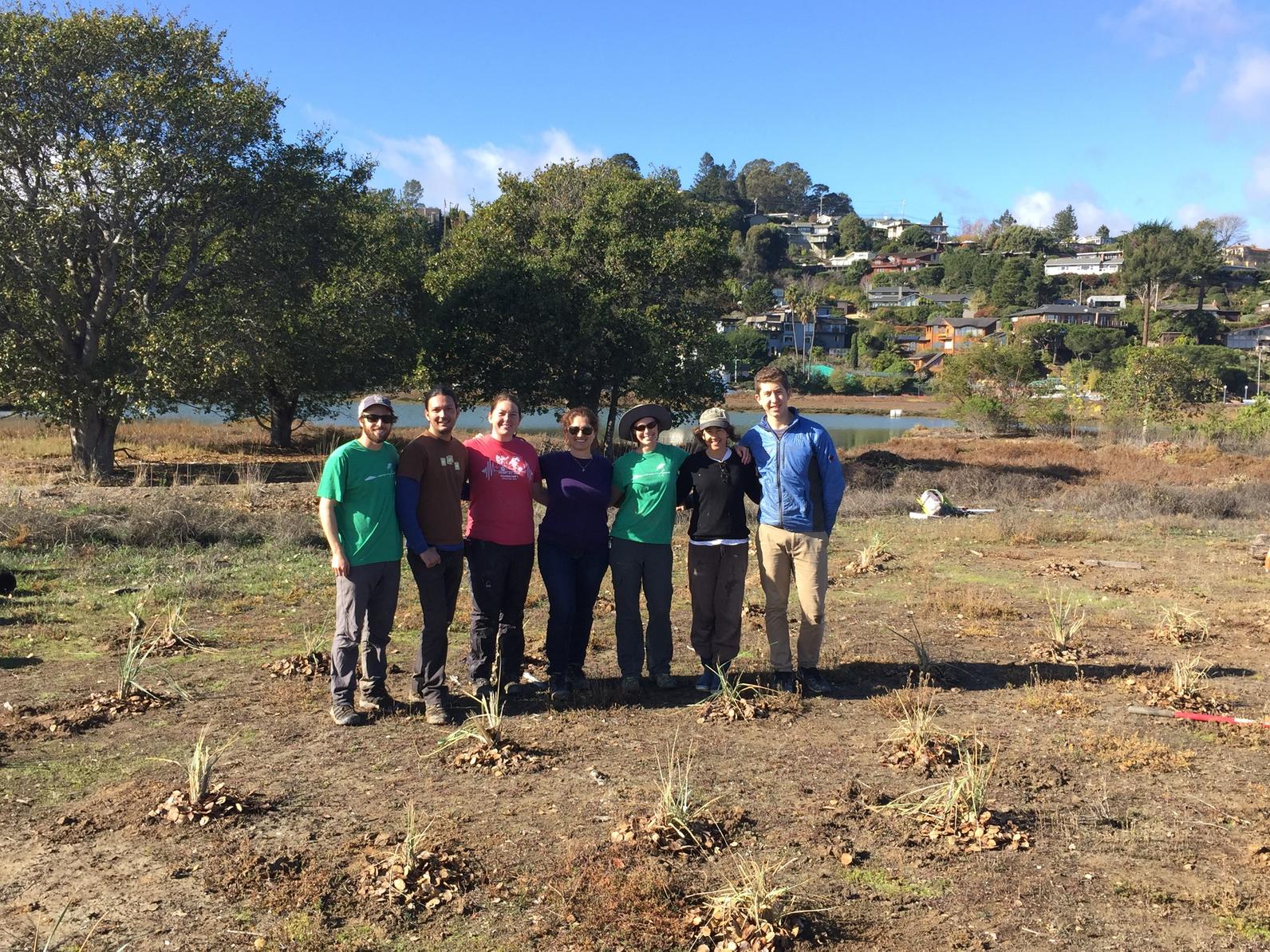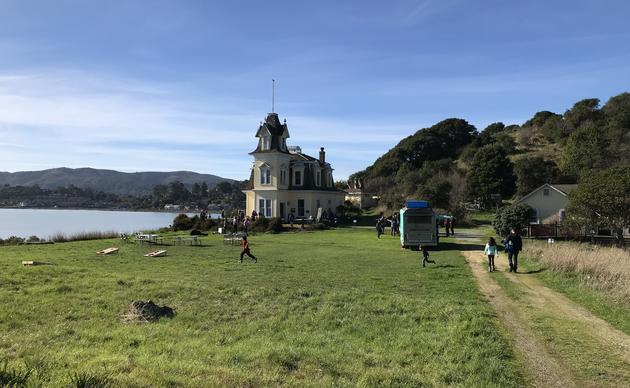
Richardson Bay Audubon Center and Sanctuary, a hidden gem of Marin County, opened in 1958. The 10-acre upland bird sanctuary features a Victorian House from 1876, and is snuggled up against a 900-acre waterbird sanctuary dotted with Scaup, Grebes, Ruddy Ducks, and diving Bufflehead.
In 2007, that tranquility was marred by the 2007 Cosco Busan oil spill. A container ship struck the Bay Bridge, puncturing the vessel, which gushed more than 50,000 gallons of oil into the bay, affecting the marine life. In an overly urbanized area, houses line the shore, blocking access to freedom from the oily waters. In Richardson Bay, there was refuge from the waters, a man-made island formed from dredge material. Aramburu Island became their sanctuary, a safe place to rest while the world around them seemed to fall apart. Once the disaster was abated, staff from the Center came up with a plan for Aramburu Island. This island, slowly eroding away, covered with invasive plants was going to become pristine habitat for a variety of birds. An enormous task that could not be done alone.
Twice monthly, staff and volunteers visit the island. The day starts meeting at the center, volunteers rub the sleep from their eyes as the staff talk of the plans for the day. A quick walk down to the dock where the four volunteers eagerly climb aboard the boat. The whaler jumps to life, purring as the engine warms before shifting to reverse, vaulting from the dock. An American Coot takes off, running on water to dodge the looming bow of the boat. The volunteers giggle at the spectacle. It is a sunny morning, a Double-crested Cormorant perches on a piling, spreading it wings to greet the day. The volunteers whip their heads back and forth as Center staff identify birds that call Richardson Bay their home.
After making the turn into the channel, the first island, Pickleweed, comes into view. Pickleweed and its neighbor – lovingly call Unnamed Island – are a glimpse into the past. Overrun with pickleweed and invasive iceplant, they are what Aramburu looked like before the restoration began. The boat continues to trudge up the channel, the north end of Aramburu begins to unfold in front of them. It is easy to spot the island, a grove of oak trees dominate the northern area. At the tops of the tree, a small white figure roosts watching the boat come closer. Staff point out the White-tailed Kite to the volunteers who help point the bird to each other. The boat continues towards its docking point, and the work is about to begin.
Touch down. The boat gently kisses the rocky shore of the island. Due to the muddy flats surrounding the island, it is the only location deep enough to land the boat. The staff jumps to life, quickly disembarking the vessel to tie the boat to a post while the volunteers wait patiently, excited to begin their restoration work. It has rained the day before, the ground is soft and muddy, yet the day is bright and sunny. A little sweat begins to grace the volunteers’ brows as they make their way up towards the North end of the island where 100 pots of a native sedge wait to be planted. One staff bends down to show the volunteers the grass, telling them “sedges have edges” to help them to identify the plant. The volunteers lean down to feel the grass, experiencing it in a new way.
The work begins. Faster than lightning the 100 pots are planted into open ground on the island. The staff stand excited, never expecting all this work to be completed today. As if dared, the volunteers work to prove them wrong. They speak of their lives as they work, one is a high school student, another a financial advisor, they volunteer for different reasons but share a common goal, to help make Aramburu the best it can be. One volunteer breaks from the pack, Michael Pierson, a first time volunteer who has brought an extra tool to the island. Opening his backpack he brings out a drone. He places it on the ground and presses a small lever. It begins to hover, another press of a lever and it takes flight. It begins to soar high above, getting a new take on Aramburu Island. A view only our feathery friends, the ones we are doing all this work for, get to enjoy. It zooms up and down, going higher into the sky, until you wonder whether it is just another bird. A bird looking down at the island and seeing all the incredible habitat being molded for it.
The volunteers continue to work. All of the native sedges are planted, tucked in by a bed of oak leaves to help keep moisture from evaporating away. With the plant watered, the volunteers take a step back, admiring their work. There is only one more thing to do, a group photo. They gather together as the drone hovers, capturing this moment in time.
The volunteers tread back to the boat. Their arms hang a little lower, their breathing a little heavier. Everyone waves to the island as the boat pushes off. While the island has come a long way, there is still work to make the island even better for wildlife. A Great Egret walks the shoreline hunting for its next meal, Western Meadowlarks sing to us as we leave, American Coots dive for food. The island is bustling with life, all thanks to our volunteers.
Erin Barry is a biological technician at the Richardson Bay Audubon Center & Sanctuary.
By Erin Barry
Make a gift to Richardson Bay Audubon Center & Sanctuary
Make a gift today to support our complete range of programs to protect waterbirds and the environment we share.




